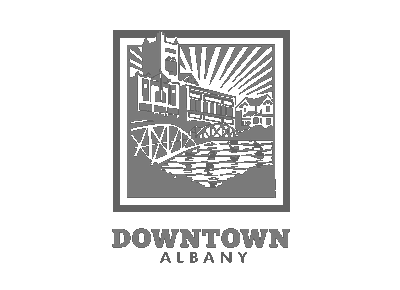Q: Why would I get charged for the rain that falls on my property? I don’t have any control of whether it rains or not.
A: A stormwater utility is a means of fairly apportioning costs to properties in the City that use and/or benefit from the City’s stormwater system. Developed land creates stormwater runoff that the City must manage through inlets, pipes, ditches, and other facilities. The City incurs costs from basic operations and maintenance, replacing old infrastructure, and complying with state and federal regulatory requirements. No other source of funding is available to adequately cover these costs that result in many benefits for Albany residents such as minimized street flooding, preventing disruption of service, lower cost repairs through proactive response vs. emergency response, improved riparian habitat, and cleaner waterways.
Q: Doesn’t stormwater go into the sewer pipes and get treated at the City’s sewer plant?
A: No. Albany has a separate stormwater system consisting of an estimated 135 miles of stormwater pipes and 70 miles of ditches that discharge to various waterways without treatment. In response to regulatory requirements, Albany has started to install some planters as natural stormwater treatment systems with road projects but most of Albany’s stormwater is discharged to waterways without treatment.
Q: Do other communities in Oregon charge for stormwater services? What do they charge?
A: Yes, approximately 40 other Oregon communities charge a separate fee for stormwater services. For a single family residential home owner in 2018, the service charges ranged from $1.00 per month in Sweet Home to $30.01 per month in Portland.
Q: Can Albany choose not to comply with stormwater regulations imposed by the Federal EPA and Oregon DEQ?
A: If regulated entities do not comply with their stormwater permit requirements, EPA has the authority to impose penalties of up to $37,500 per violation per day and the Oregon DEQ can impose penalties of $25,000 per day per violation. When Salt Lake County, Utah failed to develop, implement, and enforce a stormwater program as required in their stormwater permit, they were required to pay a civil penalty of $280,000 and to also fully comply with their permit requirements [Consent Decree in United States, et al. v. Salt Lake County, Utah (DOJ Case No. 90-5-1-1-10984)].
In addition, there is the possibility of third-party citizen lawsuits to require compliance. If the citizen lawsuit is successful, the City would also be liable to pay the third party’s attorney’s fees. In addition to civil penalties, there is the possibility of criminal prosecution if the violation was intentional.
Q: My property doesn’t drain to the City’s stormwater system; why should I have to pay a stormwater fee?
A: Regardless of where a property drains, properties receive services from a properly managed stormwater system. Also, regulatory requirements are imposed on the city as a whole, not property-by-property. An example of a citywide service would be managing the stormwater system so the streets don’t flood. These systems have operations and maintenance costs, require periodic repair or replacements, and are subject to state and federal regulatory requirements. For more information, refer to the October 10, 2016. council memo.
Q: Does my stormwater bill come on the same bill as my sewer and water bill?
A: Yes, you receive one bill from the City for sewer, water, and stormwater. The charges are shown separately.
Q: Why is gravel considered an impervious surface for stormwater billing of non-single family parcels?
A: From a technical perspective, gravel is defined as an impervious surface. In fact, the two primary methods used to estimate stormwater runoff, the Rational Method and the Natural Resources Conservation Service (NRCS) Technical Release No. 55 (TR-55) both define runoff coefficients for gravel surfaces that are very similar to paved surfaces. The Rational Method runoff coefficient for pavement is 0.90 compared to 0.85 for gravel. The TR-55 method runoff coefficient for pavement is 98 and the runoff coefficient for gravel is as high as 91.
This is a common practice among utility providers and is supported by technical calculations discussed above. The topic of gravel was discussed extensively at the October 10, 2016, council meeting. For more information, refer to the October 10, 2016, council outreach memo.


